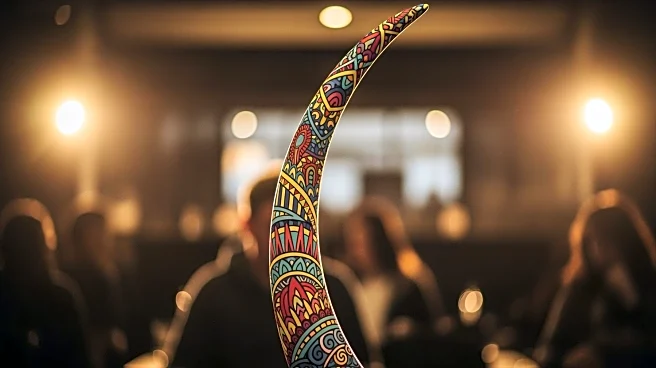What's Happening?
The Utah Mammoth, formerly known as the Arizona Coyotes, have unveiled their new mascot, Tusky, during their home opener against the Calgary Flames. The team, now part of the expansion franchise Utah Hockey Club, has started the season with a record of 1-2.
Tusky, standing at 6'5" and wearing the number 00, is designed to embody the team's 'Tusks Up' rallying cry. According to team owners Ryan and Ashley Smith, Tusky will play a significant role in community engagement, appearing at games, team events, and various community gatherings, including schools and hospitals. The mascot's design is inspired by the prehistoric mammoth, symbolizing strength and presence, akin to the herds that once roamed Utah during the last Ice Age.
Why It's Important?
The introduction of Tusky as the Utah Mammoth's mascot is a strategic move to strengthen community ties and enhance fan engagement. Mascots often serve as a bridge between sports teams and their local communities, fostering a sense of identity and pride. By incorporating elements of local history and culture, the Mammoth aims to create a unique and memorable experience for fans, potentially increasing attendance and support for the team. This initiative reflects a broader trend in sports where teams leverage mascots and community events to build a loyal fan base and enhance their brand presence.
What's Next?
Tusky is expected to become a staple in the Utah Mammoth's community outreach efforts. Fans can anticipate seeing the mascot at various events beyond the hockey arena, including educational and charitable activities. The team may also explore additional marketing and promotional opportunities featuring Tusky to further integrate the mascot into the community. As the season progresses, the effectiveness of Tusky's role in boosting fan engagement and community involvement will likely be evaluated, potentially leading to more initiatives centered around the mascot.
Beyond the Headlines
The creation of Tusky highlights the importance of cultural and historical elements in sports branding. By drawing on the prehistoric significance of mammoths in Utah, the team not only creates a mascot with local relevance but also taps into broader themes of heritage and identity. This approach can foster deeper connections with fans who value the integration of local history into their sports experience. Additionally, the mascot's role in community events underscores the ethical responsibility of sports teams to contribute positively to their local environments.

















